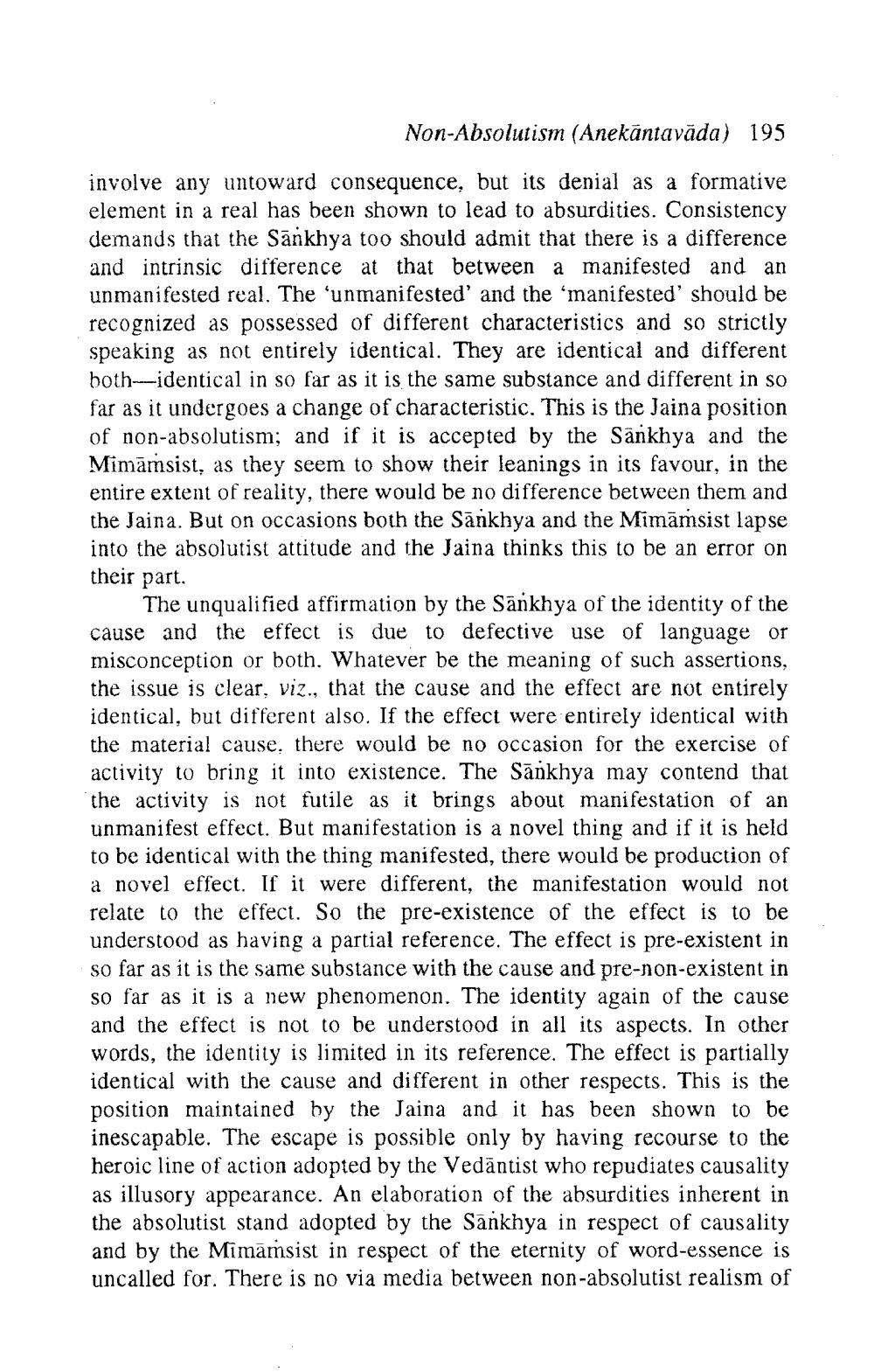________________
Non-Absolutism (Anekāntavāda) 195
involve any untoward consequence, but its denial as a formative element in a real has been shown to lead to absurdities. Consistency demands that the Sārkhya too should admit that there is a difference and intrinsic difference at that between a manifested and an unmanifested real. The ‘unmanifested' and the “manifested' should be recognized as possessed of different characteristics and so strictly speaking as not entirely identical. They are identical and different both-identical in so far as it is the same substance and different in so far as it undergoes a change of characteristic. This is the Jaina position of non-absolutism; and if it is accepted by the Sankhya and the Mimāmsist, as they seem to show their leanings in its favour, in the entire extent of reality, there would be no difference between them and the Jaina. But on occasions both the Sankhya and the Mimāmsist lapse into the absolutist attitude and the Jaina thinks this to be an error on their part.
The unqualified affirmation by the Sankhya of the identity of the cause and the effect is due to defective use of language or misconception or both. Whatever be the meaning of such assertions, the issue is clear, viz., that the cause and the effect are not entirely identical, but different also. If the effect were entirely identical with the material cause there would be no occasion for the exercise of activity to bring it into existence. The Sankhya may contend that the activity is not futile as it brings about manifestation of an unmanifest effect. But manifestation is a novel thing and if it is held to be identical with the thing manifested, there would be production of a novel effect. If it were different, the manifestation would not relate to the effect. So the pre-existence of the effect is to be understood as having a partial reference. The effect is pre-existent in so far as it is the same substance with the cause and pre-non-existent in so far as it is a new phenomenon. The identity again of the cause and the effect is not to be understood in all its aspects. In other words, the identity is limited in its reference. The effect is partially identical with the cause and different in other respects. This is the position maintained by the Jaina and it has been shown to be inescapable. The escape is possible only by having recourse to the heroic line of action adopted by the Vedāntist who repudiates causality as illusory appearance. An elaboration of the absurdities inherent in the absolutist stand adopted by the Sankhya in respect of causality and by the Mimamsist in respect of the eternity of word-essence is uncalled for. There is no via media between non-absolutist realism of




